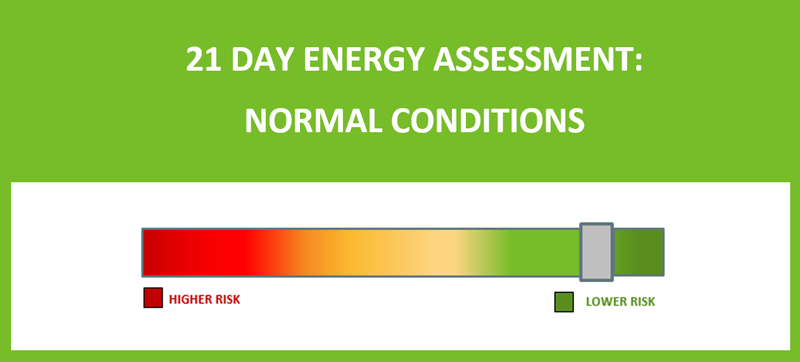
As a key part of its winter operations, ISO New England closely monitors weather forecasts and energy supplies, expected consumer demand, and other variables to identify and communicate potential reliability issues. Each week from December through March, the ISO publishes the results of these analyses in the 21-Day Energy Assessment Forecast and Report—a rolling, three-week outlook of anticipated power system conditions.
The purpose of this sophisticated assessment is to identify potential energy shortfalls while there is time to prevent them or lessen their impact. With up to three weeks’ notice, the report gives resource owners time to evaluate the status of their fuel supplies and to arrange for replenishment, as needed, or to reschedule maintenance in order to maximize availability.
Such an early warning would also allow time for coordination among the ISO, the region’s utilities, and government officials, especially if conservation is needed.
The assessment examines whether the region’s electricity supply could fall below anticipated consumer demand and required operating reserves during any hour in the upcoming three-week period.
The report summarizes the bulk electric system’s overall health and risk level, and lists any Energy Alerts or Energy Emergencies:
The report includes information about when each alert or emergency was declared, and a projection of when it will end.

Example of the graphic describing system conditions that appears in the report
Source: ISO New England
Also included are a series of charts and other information about the variables used in the assessment, such as:
The ISO publishes the report to its website weekly during the winter, when concern about energy adequacy is highest, and every two weeks for the rest of the year. When enhanced situational awareness would be required, such as the declaration of an Energy Alert or Energy Emergency, the ISO would publish the report more frequently.

Winter poses unique challenges to New England’s power grid. With a limited supply of pipeline natural gas—the region’s predominant fuel source for electricity, but also a key fuel for home heating—many generators rely on stored fuels such as oil and LNG to generate electricity during cold snaps.
But these stored fuels can also be in short supply and challenging to replenish, potentially limiting electricity production during periods of extreme cold weather. This was the case during two weeks in December 2017 and January 2018, which led the ISO to develop the 21-Day Energy Assessment Forecast and Report. In a typical winter, if fuel is readily available for delivery to New England, the forecast’s three-week timeframe allows generators to schedule deliveries in order to meet their obligations to supply power.
Meanwhile, under an Energy Alert or Energy Emergency, the ISO and other entities can take actions to mitigate forecasted energy shortfalls. These actions include:
In conjunction with the development of the report, the ISO made revisions to Operating Procedure 21—Operational Surveys, Energy Forecasting & Reporting and Actions During An Energy Emergency (OP-21), including an expanded survey of all New England generating facilities that use natural gas, fuel oil, or coal to generate electricity. The survey enhances the ISO’s situational awareness of regional fuel supplies, replenishment strategies, and potential emissions limitations.